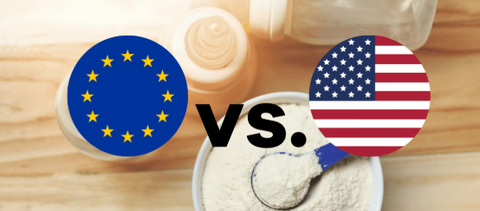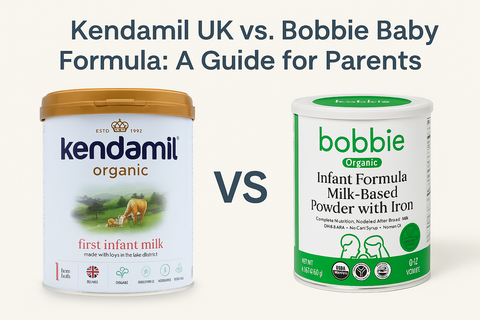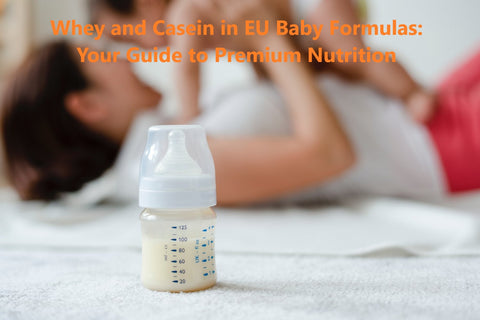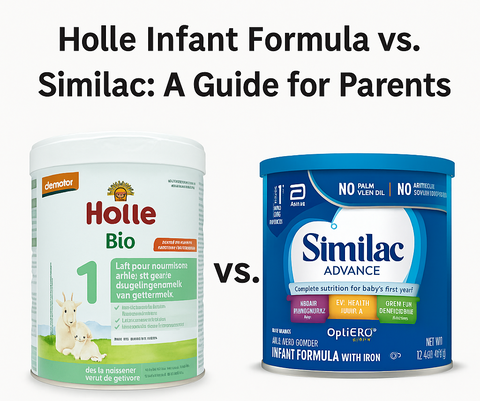How to Get Rid of the Pacifier
The sweet sound of a baby's coos and the adorable sight of a pacifier-clad infant are heartwarming moments for parents. However, as your little one grows, the time will come to say farewell to the comforting sou-sou. Pacifier weaning is a significant milestone in a toddler's development, marking their journey toward independence. In this comprehensive guide, we will explore when it's time to stop and give five practical tips on how to get rid of the pacifier. This can help parents navigate the process of breaking the pacifier habit while fostering healthy toddler self-soothing and a smooth comfort object transition.
What is a pacifier?

A pacifier, often referred to as a paci, soother (Sou Sou), or dummy in different regions, is a small, nipple-shaped device designed for babies to suck on. It is typically made of soft, baby-safe materials such as rubber, silicone, or latex, and it has a shield or base that prevents the entire pacifier from being swallowed.
The primary purpose of a pacifier is to satisfy a baby's natural instinct to suck, providing comfort and soothing effects. Pacifiers are commonly used during infancy and early toddlerhood and come in various shapes, sizes, and designs. Some pacifiers have orthodontic or ergonomic designs to support healthy oral development. Parents often use pacifiers to calm a fussy or irritable baby, especially during sleep or times of distress.
Are pacifiers bad?
Using a pacifier shouldn't be unfairly labeled as "bad," up to 85% of babies will likely use one at some point. The decision to use a pacifier or not is a personal one and can depend on various factors. Here are some Pros and Cons to help you make an informed decision:
Pros of Pacifier Use:
- Soothing and Comfort: Pacifiers provide babies with a non-nutritive sucking action that can be soothing and comforting. Sucking is a natural reflex for infants, and a pacifier can help them self-soothe, especially during periods of distress or when trying to fall asleep.
- Reduced SIDS Risk: Some studies suggest that the use of pacifiers during sleep may be associated with a reduced risk of Sudden Infant Death Syndrome (SIDS). However, it's essential to follow safe sleep guidelines, and the American Academy of Pediatrics recommends offering the pacifier at naptime and bedtime after breastfeeding is well established.
- Easier Weaning from Breast or Bottle: Pacifiers can be helpful during the weaning process from breast or bottle, as they satisfy the sucking reflex without providing nutrition. This can benefit parents who are gradually transitioning their baby to other feeding methods.
Cons of Pacifier Use:
- Dependency Concerns: Prolonged and excessive pacifier use can potentially lead to dependency issues. If a child becomes overly reliant on the pacifier for comfort, it may interfere with developing other self-soothing skills.
- Impact on Dental Health: Extended use of pacifiers, especially beyond the age of 2 or 3, may contribute to dental problems, such as misaligned teeth or bite issues. It's crucial to monitor the use of pacifiers and consider weaning at an appropriate age.
- Hygiene: Regularly clean and inspect pacifiers to ensure they are free from dirt, germs, or damage. Avoid dipping pacifiers in sugary substances, which can contribute to tooth decay.
Considerations for Decision-Making:
- Individual Baby's Needs: Every baby is unique. Some babies find comfort in pacifiers, while others may not be interested. Pay attention to your baby's cues and preferences.
- Parental Comfort: Consider your own comfort level with pacifier use. Some parents find pacifiers helpful in soothing their little ones, while others may choose alternative methods.
- Safe Sleep Practices: If you decide to use a pacifier, follow safe sleep practices. Offer the pacifier during naps and bedtime, but don't force it if your baby doesn't want it.
- Monitor Usage: Be mindful of the duration and frequency of pacifier use. Introduce weaning when appropriate to avoid potential issues.
Using pacifiers should be based on individual circumstances and preferences. If you have concerns or questions about pacifier use, it's advisable to consult with your pediatrician. They can provide guidance tailored to your child's needs and developmental stage.
When to Stop with Pacifier Use?

Deciding when to stop your toddler's pacifier use is a personal choice that varies from child to child and family to family. While there isn't a one-size-fits-all answer, there are some general guidelines to help you determine the right time to wean your toddler from their pacifier:
- Age-Appropriate Timing: Many pediatricians suggest starting the weaning process between the ages of 6 months to 1 year. By this time, your child may have developed other self-soothing mechanisms, and the risk of dependency on the pacifier is lower.
- Developmental Milestones: Pay attention to your toddler's developmental milestones. If your child shows signs of increased independence, such as eating solid foods and walking, it may be an opportune time to initiate the weaning process.
- Speech and Dental Development: Extended pacifier use can potentially impact speech development and dental health. Keep an eye on your toddler's speech milestones, and if you notice any delays or concerns, consult with your pediatrician. Additionally, if you observe changes in your child's dental health, it may be time to consider weaning.
- Comfort Object Transition: Introduce alternative comfort objects or soothing techniques to help ease the transition. This could include a special blanket, a cuddly stuffed animal, or a favorite toy. Encouraging your child to form attachments to these alternatives can make the weaning process smoother.
- Parental Readiness: Consider your readiness as a parent. Weaning can be a challenging process, and it's essential to approach it with patience and consistency. Ensure you are prepared for potential resistance from your toddler and can provide support during the transition.
- Gradual Reduction: Instead of abruptly taking away the pacifier, consider a gradual reduction approach. Limit pacifier use to specific times, such as naptimes or bedtimes, and gradually decrease availability. This can help your toddler adjust more smoothly.
5 Tips on how to stop with the pacifier:

- Gradual Reduction: Initiating pacifier weaning requires a gradual approach. Instead of going cold turkey, slowly reduce the frequency of pacifier use. Start by limiting it to specific times, such as naptime or bedtime, and encourage other soothing methods during the day. This gradual reduction allows your toddler to adapt to the changes without feeling overwhelmed.
- Introduce Comfort Alternatives: Toddler self-soothing becomes more manageable when alternative comfort objects are introduced. Consider providing a soft blanket, a cuddly stuffed animal, or even a favorite toy. This eases the transition and helps your child form a new attachment, redirecting their need for comfort away from the pacifier.
- Create a Pacifier-Free Routine: Establishing a consistent routine can greatly aid in breaking the pacifier habit. Create a visual schedule or chart that illustrates when pacifier use is allowed and when it's not. This empowers your toddler with a sense of control and predictability, making the process of pacifier elimination less challenging for both parent and child.
- Positive Reinforcement: Celebrate small victories along the way. Acknowledge and praise your child when they go without the pacifier for an extended period. Use positive reinforcement, such as a sticker chart, to track their progress. Offering small rewards for reaching milestones will motivate your toddler and make the journey toward pacifier weaning a positive experience.
- Involve Your Child in the Process: Make the pacifier elimination process a collaborative effort. Discuss the idea with your toddler, explaining that they are growing up and ready to explore new ways of self-soothing. Allow them to have a say in choosing alternative comfort items and involve them in creating a special "goodbye" ceremony for their pacifier. This engagement empowers your child and makes the transition more meaningful.
Conclusion
As parents, we cherish the heartwarming moments of our little ones with pacifiers, but the journey toward independence inevitably calls for a sou-sou farewell. Pacifier weaning is a significant milestone. Navigating this phase requires thoughtful consideration, from the baby's unique needs to parental comfort and safe practices. Deciding when to stop is a personal choice influenced by developmental milestones, speech, dental considerations, and, of course, parental readiness. In the end, comfort will find its way, whether it's a soft blanket, a cuddly stuffed animal, or a favorite toy. Here's to embracing the pacifier-free adventures ahead, marking yet another chapter in the delightful comedy of parenthood!




